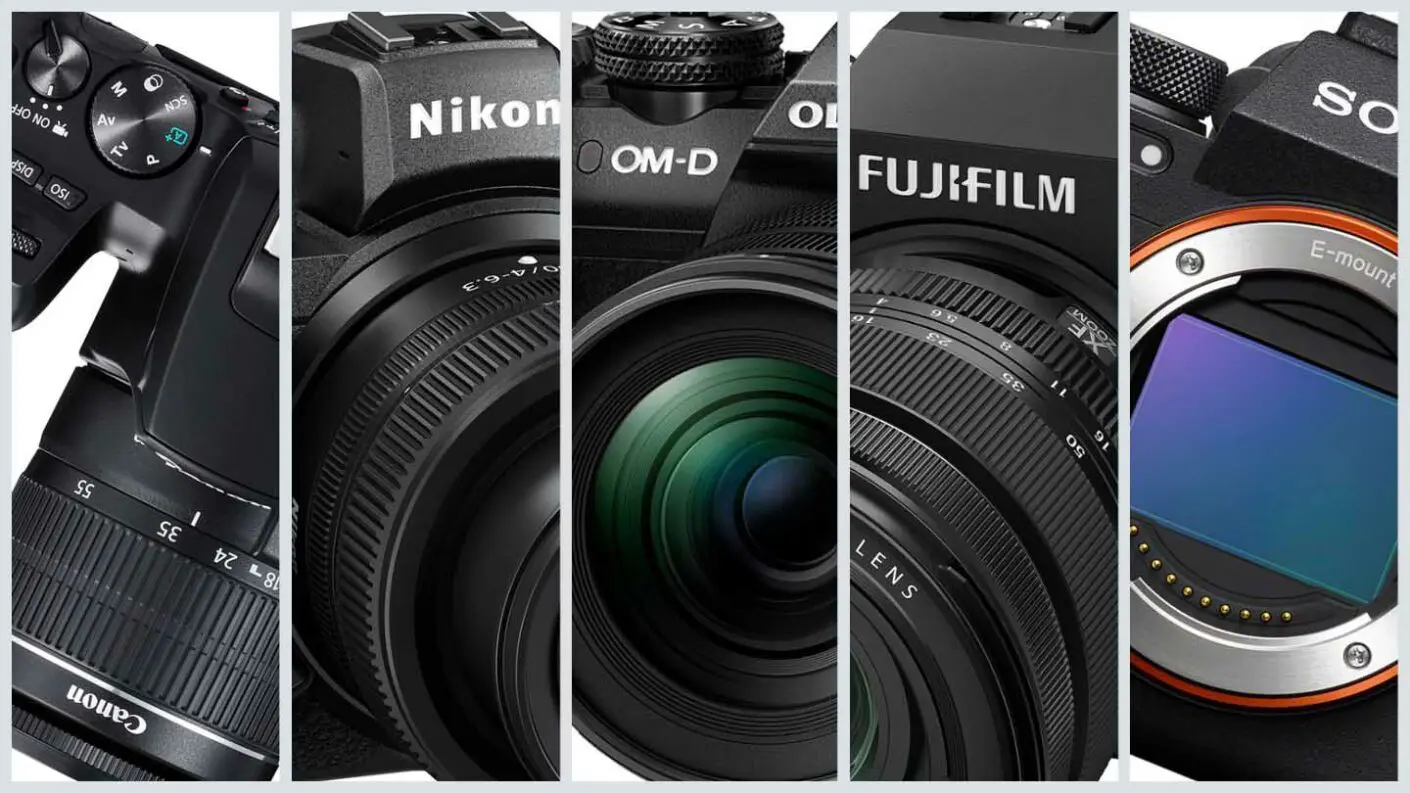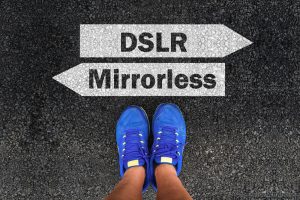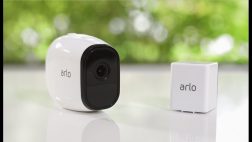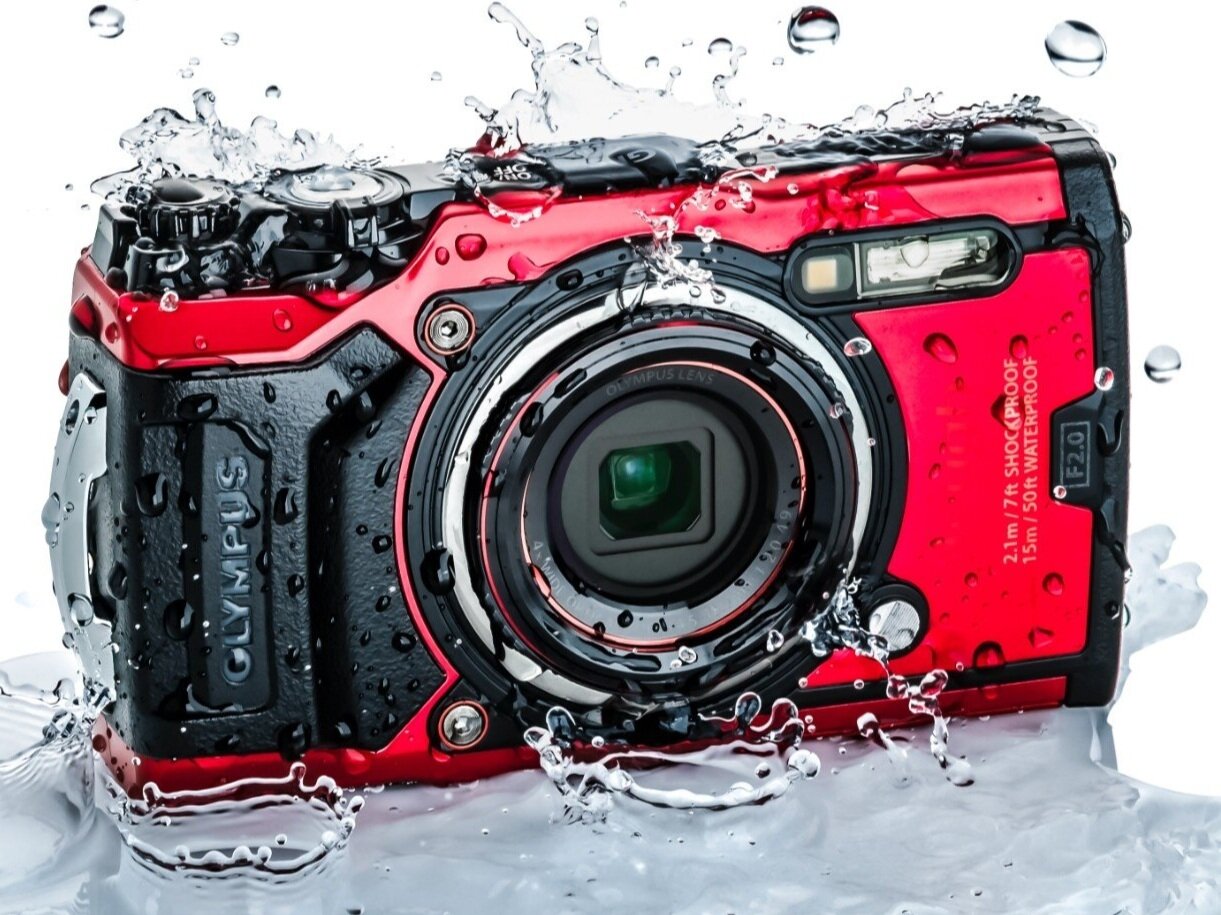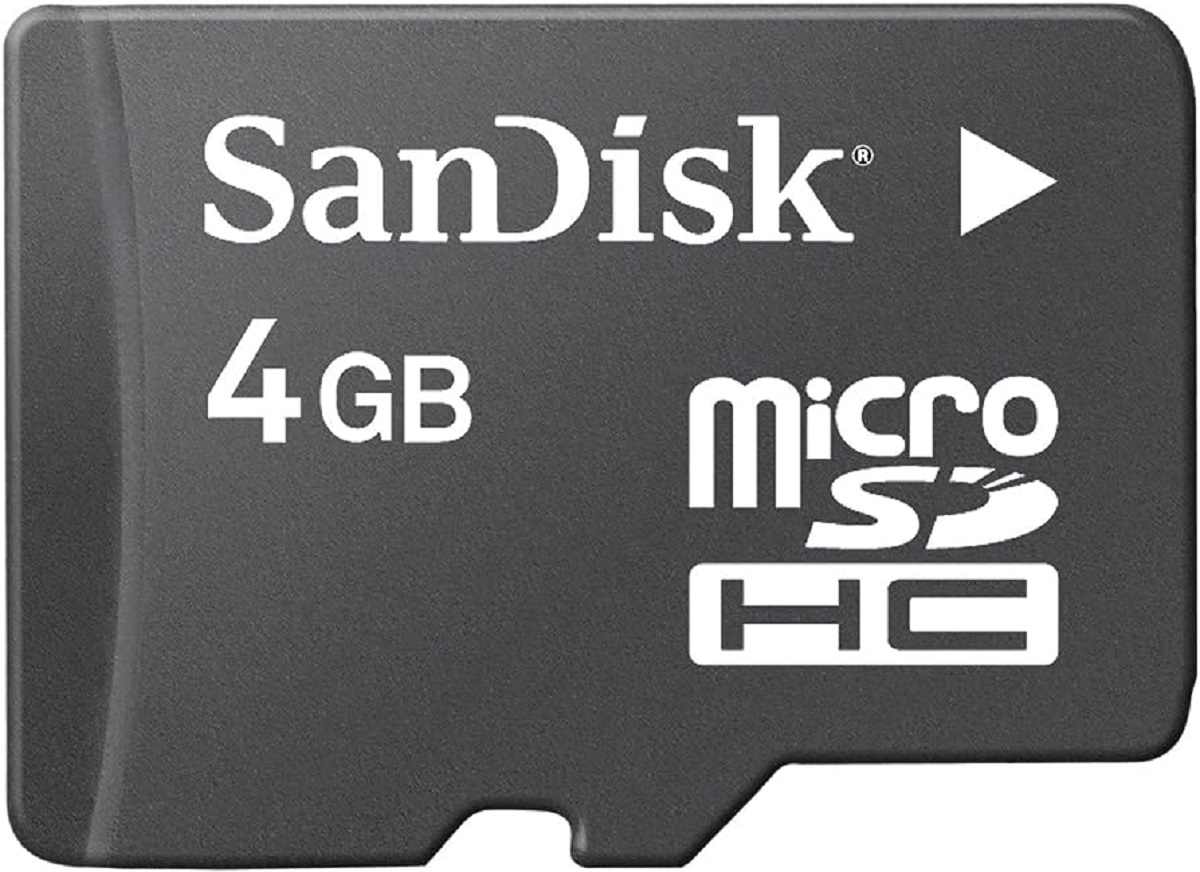Introduction
Choosing the right digital camera can be a daunting task, especially with the wide range of options available in the market today. Whether you’re a photography enthusiast or a casual user looking to capture memorable moments, it’s essential to find a camera that suits your needs and preferences.
In this article, we will explore the different types of digital cameras and provide insights into their features and capabilities. By the end of this guide, you’ll have a better understanding of the options available to help you make an informed decision.
Gone are the days when the only choice was a bulky DSLR. Today, we have point-and-shoot cameras, mirrorless cameras, and DSLRs, each with its own advantages and disadvantages. Understanding these differences will allow you to choose a camera that aligns with your photography goals and budget.
Point-and-shoot cameras are perfect for those seeking convenience and ease of use. With their compact size and automatic settings, they are ideal for beginners or individuals who prefer a simple “point and shoot” approach. These cameras offer a range of features, including digital zoom, built-in flash, and various shooting modes. However, they generally have smaller sensors and limited manual controls, compromising their ability to capture images in challenging lighting conditions or produce professional-level results.
Mirrorless cameras have gained popularity in recent years due to their versatility and compactness. They combine the convenience of a point-and-shoot camera with the image quality and manual control of a DSLR. Unlike DSLRs, which use a mirror and optical viewfinder system, mirrorless cameras utilize an electronic viewfinder or LCD screen for composing shots. This technology allows for a smaller and lighter camera body, making it ideal for travel and street photography. Mirrorless cameras also offer interchangeable lenses, giving users the flexibility to experiment with different focal lengths and achieve a wide range of creative effects.
DSLR cameras are the go-to choice for professional photographers and enthusiasts who demand the highest image quality and performance. With their larger sensors, robust build quality, and extensive manual controls, DSLRs are capable of delivering exceptional image results across various shooting conditions. These cameras offer a wide range of lens options, allowing photographers to achieve different perspectives and capture stunning details. However, they tend to be bulkier and heavier than other camera types, making them less suitable for casual everyday use.
Point-and-Shoot Cameras
Point-and-shoot cameras, also known as compact cameras, are designed for simplicity and convenience. These cameras are compact in size, making them highly portable and easy to carry around. They typically feature a fixed lens and automatic settings, making them an ideal choice for beginners or individuals who want a fuss-free photography experience.
One of the key advantages of point-and-shoot cameras is their simplicity. These cameras are designed to be user-friendly, with automatic modes that adjust settings such as exposure, focus, and white balance. This makes them perfect for capturing quick snapshots or moments on the go without the need for manual adjustments.
Point-and-shoot cameras also offer a range of shooting modes to cater to different scenes and subjects. From portrait mode to landscape mode, these predetermined settings help optimize image quality and produce better results in specific situations. Some cameras even come with specialized modes, such as macro mode for close-up photography or sports mode for capturing fast-moving subjects.
One of the limitations of point-and-shoot cameras is their smaller sensor size. Compared to mirrorless cameras or DSLRs, the sensors in these cameras are typically smaller, which can affect image quality, especially in low light conditions. Additionally, point-and-shoot cameras usually have a limited optical zoom range, relying more on digital zoom. This can result in a loss of image quality when zooming in on distant subjects.
However, advancements in technology have led to improvements in point-and-shoot cameras. Many models now offer higher megapixel counts, better image stabilization, and improved low light performance. Some even include Wi-Fi or NFC connectivity options, allowing you to transfer photos wirelessly to other devices or instantly share them on social media platforms.
Overall, point-and-shoot cameras are a great option for casual photographers or those who prioritize convenience and portability. They’re perfect for capturing everyday moments, family events, or vacations without the need for complex manual settings. With their compact size and user-friendly features, point-and-shoot cameras provide an easy and accessible entry point into the world of digital photography.
Mirrorless Cameras
Mirrorless cameras have gained significant popularity in recent years, offering a compelling alternative to traditional DSLRs. These cameras combine the convenience and compactness of point-and-shoot cameras with the image quality and versatility of interchangeable lenses.
Unlike DSLRs, which use a mirror and optical viewfinder system, mirrorless cameras employ an electronic viewfinder (EVF) or an LCD screen for framing and composing shots. This eliminates the need for a bulky mirror, resulting in a smaller and lighter camera body. Mirrorless cameras are a great option for photographers who prioritize portability without compromising on image quality.
One of the major advantages of mirrorless cameras is their versatility in lens options. These cameras offer interchangeable lens systems, allowing photographers to experiment with different focal lengths, aperture settings, and specialized lenses. This flexibility enables them to capture a wide range of subjects, from landscapes to portraits to macro photography.
Mirrorless cameras also excel in continuous shooting speeds, making them ideal for capturing action and fast-moving subjects. Their electronic shutter eliminates the mechanical movement of a traditional DSLR mirror, allowing for rapid burst shooting and quick autofocus tracking.
Another advantage of mirrorless cameras is their advanced autofocus systems. These cameras utilize a combination of contrast detection and phase detection autofocus, resulting in accurate and speedy focusing. This is particularly beneficial when shooting in challenging conditions or situations where precise focusing is crucial.
While mirrorless cameras offer a multitude of advantages, they do have some limitations. One notable limitation is battery life. Due to the continuous power required for electronic viewfinders and display screens, mirrorless cameras tend to have relatively shorter battery life compared to DSLRs. Therefore, it’s important to carry extra batteries or a portable charger when going on extended shoots.
In terms of image quality, mirrorless cameras typically feature larger sensors than point-and-shoot cameras, resulting in better dynamic range and low light performance. However, they still trail behind DSLRs in terms of sensor size and image processing capabilities. This can lead to slightly inferior image quality when it comes to handling high ISOs or capturing fine details.
Overall, mirrorless cameras are an excellent choice for photographers who value portability and versatility. With their compact size, interchangeable lens systems, advanced autofocus, and high-speed shooting capabilities, they provide a powerful alternative to traditional DSLRs. Whether you’re a travel photographer, street photographer, or just enthusiastic about capturing high-quality images, mirrorless cameras offer a lightweight and flexible solution for creative expression.
DSLR Cameras
For professional photographers and photography enthusiasts, digital single-lens reflex (DSLR) cameras have long been the gold standard. These cameras offer exceptional image quality, extensive manual controls, and a wide range of lens options, making them a popular choice among professionals in various photography genres.
One of the main advantages of DSLR cameras is their larger sensor size. The larger the sensor, the more light it can capture, resulting in better image quality, dynamic range, and low light performance. This advantage is particularly evident in situations where high ISOs are required or when capturing fine details in the image.
Another benefit of DSLR cameras is their robust build quality and ergonomic design. DSLRs are generally larger and heavier compared to other camera types, which can provide better stability and handling. They are designed to withstand various shooting conditions, making them suitable for outdoor adventures and challenging environments.
DSLRs excel in their extensive manual controls, giving photographers full control over exposure settings, focus, and other essential parameters. This allows for precise customization, enabling photographers to capture images exactly as they envision them. Additionally, DSLR cameras typically have physical buttons and dedicated dials for easy access to these controls, enhancing the overall shooting experience.
One of the key features that sets DSLRs apart is their vast selection of lens options. These cameras are compatible with a wide range of lenses, including prime lenses, zoom lenses, telephoto lenses, and specialized lenses for macro, portrait, or wildlife photography. This versatility allows photographers to achieve different perspectives, experiment with various focal lengths, and capture stunning details.
While DSLRs offer numerous advantages, they do have some drawbacks. The most obvious drawback is their size and weight. DSLR cameras are bulkier and heavier compared to point-and-shoot cameras or mirrorless cameras, making them less suitable for everyday carry or casual photography. This can be a significant factor to consider, especially for photographers who want to travel light or need to shoot for extended periods.
Another limitation of DSLRs is the lack of video features compared to mirrorless cameras. While DSLRs can capture high-quality video, they often lack advanced video autofocus capabilities and other video-specific features that are more common in mirrorless cameras. However, this may not be a significant concern for photographers primarily focused on still photography.
In summary, DSLR cameras are the go-to choice for professional photographers and enthusiasts who demand top-notch image quality, extensive manual controls, and a wide range of lens options. While they may be bulkier and heavier compared to other camera types, their superior image quality and versatility make them the preferred choice for various photography genres, including landscape, portrait, sports, and wildlife photography.
Important Factors to Consider
When choosing a digital camera, there are several important factors to consider that can significantly impact your photography experience and the results you achieve. Understanding these factors will help you make an informed decision and select a camera that best suits your needs and preferences.
One of the crucial factors to consider is camera resolution. Camera resolution is measured in megapixels (MP) and determines the level of detail in your images. Higher resolution cameras can capture more details and allow for larger prints or cropping without significant loss in quality. However, it’s important to note that megapixels alone do not guarantee superior image quality, as other factors such as sensor size and image processing also play a role.
Sensor size is another critical consideration. The size of the camera’s sensor affects image quality, low light performance, and dynamic range. Larger sensors generally produce better-quality images, especially in challenging lighting conditions. Full-frame sensors offer the highest image quality, while APS-C and micro four-thirds sensors are commonly found in mirrorless and DSLR cameras, providing a good balance between image quality and size.
Lens options are an essential factor to consider, especially if you’re looking for a camera with interchangeable lenses. A wide range of lenses allows you to explore different focal lengths, from wide-angle for landscapes to telephoto for wildlife. Consider the availability and variety of lenses within the camera system you’re interested in, as this will determine your creative possibilities and future lens upgrades.
Image stabilization is crucial for minimizing camera shake and achieving sharp images. Many cameras offer in-body or lens-based image stabilization systems, which help compensate for shaky hands or movement. Image stabilization is particularly important when shooting in low light conditions or when using telephoto lenses, where even slight movements can result in blurry photos.
Low light performance is another vital factor to consider, especially if you anticipate shooting in dimly lit environments. Cameras with larger sensors and better ISO performance can capture clearer and less noisy images in low light situations. Consider the maximum ISO range and how well the camera handles high ISOs without significant loss in quality.
Autofocus systems vary across different cameras, so it’s essential to consider autofocus capabilities if you shoot fast-moving subjects or require precise focusing. Look for cameras with advanced autofocus systems that offer speedy and accurate subject tracking, as this can greatly improve your ability to capture sharp and well-focused images.
If you’re interested in shooting videos, consider the camera’s video recording capabilities. Look for cameras that offer high-resolution video recording, manual control over settings, and options for external microphones or headphones. Additionally, features like in-camera stabilization and autofocus tracking can greatly enhance the quality of your video footage.
Connectivity options can also be important, especially if you want to transfer images wirelessly or remotely control your camera. Wi-Fi, NFC, and Bluetooth capabilities allow for seamless wireless image transfer to your smartphone or computer, while remote control functionality lets you capture shots from a distance or use your smartphone as a remote viewfinder.
Lastly, consider your budget when choosing a digital camera. Different camera models and types come at various price points, so it’s important to determine your budget and find a camera that offers the features and capabilities you need within that range. Keep in mind that investing in lenses and accessories may also be a consideration, as they can significantly impact your overall photography experience.
By considering these important factors, you can find a digital camera that meets your needs and preferences, allowing you to capture stunning images and unleash your creative potential.
Camera Resolution
Camera resolution is an important factor to consider when choosing a digital camera. It refers to the number of pixels the camera’s sensor can capture and is typically measured in megapixels (MP). The higher the resolution, the more detail the camera can capture in an image.
Higher resolution cameras are capable of capturing more fine details, which can be beneficial for cropping images or making large prints without compromising image quality. For example, a 24MP camera can capture more details compared to a 12MP camera when both images are viewed at the same size or printed at the same dimensions.
However, it’s important to note that megapixels alone do not solely determine the quality of an image. Other factors such as sensor size, image processing, and lens quality also play a crucial role in determining image quality and sharpness.
Higher-resolution cameras are often favored by professional photographers and those who need to capture intricate details in their images, such as portrait, landscape, or fine art photographers. These photographers may also benefit from the ability to crop their images without losing significant detail.
On the other hand, for casual photographers or those primarily sharing images online, lower-resolution cameras can still produce satisfactory results. Cameras with resolutions in the range of 12-16MP are more than sufficient for everyday photography, social media sharing, and printing smaller-sized images.
It’s worth considering that higher-resolution cameras often generate larger file sizes. This can impact storage capacity and require more processing power for editing and post-production. Additionally, larger file sizes can require more demanding computer systems for smooth image viewing and editing.
When considering camera resolution, it’s essential to assess your specific needs and usage. If you primarily shoot for online sharing or smaller prints, opting for a lower-resolution camera might be more cost-effective and provide adequate results. However, if you require the utmost detail and plan to make larger prints or manipulate the images during post-processing, a higher-resolution camera would be a more suitable choice.
Ultimately, camera resolution is just one aspect to consider when selecting a digital camera. It’s essential to balance resolution with other factors such as sensor size, lens options, low light performance, and image stabilization to ensure the camera meets your specific photography needs and preferences.
Sensor Size
The sensor size of a digital camera is a crucial factor to consider when choosing a camera, as it directly affects image quality, low light performance, and dynamic range. The sensor is the electronic component in the camera that captures light and transforms it into digital information.
Digital cameras generally come with different sensor sizes, ranging from smaller sensors found in point-and-shoot cameras to larger sensors in mirrorless cameras and DSLRs. The size of the sensor is measured in millimeters and is usually categorized into three main types: full-frame, APS-C, and micro four-thirds.
Larger sensor sizes tend to offer better image quality. They can capture more light, resulting in improved dynamic range, greater detail, and reduced noise in the images. This is particularly beneficial in challenging lighting conditions, such as low light environments or high contrast scenes.
Full-frame sensors are the largest and offer the best image quality in terms of low noise and high dynamic range. These sensors have the same dimensions as a traditional 35mm film frame, providing an expansive field of view and excellent performance in low light.
APS-C sensors are smaller than full-frame sensors but still larger than the sensors found in point-and-shoot cameras. They offer a good balance between image quality and portability, making them popular in both mirrorless cameras and DSLRs. APS-C cameras are suitable for a wide range of photography genres, including portraits, landscapes, and street photography.
Micro four-thirds (MFT) sensors are even smaller and are commonly found in mirrorless cameras. While they have a smaller physical size, MFT sensors still deliver impressive image quality, especially in well-lit conditions. They offer a compact and lightweight solution, making them a popular choice for travel and everyday photography.
It’s important to consider your photography needs and preferences when deciding on a sensor size. If you are a professional photographer or seeking the highest image quality, a full-frame camera may be the preferred choice. For enthusiasts or those looking for a balance between image quality and portability, cameras with APS-C or MFT sensors offer excellent performance and versatility.
It’s worth noting that larger sensors may require larger and more expensive lenses to take full advantage of their capabilities. The available lens options for a specific camera system should also be considered when evaluating sensor size. Additionally, consider the camera’s low light performance, as larger sensors generally provide better noise control and greater sensitivity in challenging lighting conditions.
In summary, sensor size is an important factor in determining the image quality and low light performance of a digital camera. Larger sensor sizes offer better image quality and low light capabilities, while smaller sensors provide portability and convenience. Assess your photography needs, budget, and desired portability to select the camera with the most suitable sensor size for your specific purposes.
Lens Options
When choosing a digital camera, the available lens options should be a crucial consideration. The lens you use has a significant impact on the types of photos you can capture and the creative possibilities at your disposal. Different lenses offer varying focal lengths, aperture ranges, and specialized features, allowing you to achieve diverse perspectives and effects in your photography.
Interchangeable lens systems are typically found in mirrorless cameras and DSLRs, offering the flexibility to change lenses based on your shooting needs. Having a wide selection of lenses available for your camera system expands your creativity and allows you to adapt to different photography genres and shooting situations.
Standard zoom lenses are versatile options that cover a range of focal lengths, such as 24-70mm or 18-55mm. These lenses are suitable for everyday photography, including portraits, landscapes, and street photography, offering flexibility and convenience in one lens. They are often the default kit lens that comes with the camera body and provide a good starting point for beginners.
Telephoto lenses have longer focal lengths and are excellent for capturing subjects at a distance. These lenses are favored by wildlife, sports, and event photographers, allowing them to bring distant subjects closer and isolate them from the background. Examples of telephoto lenses include 70-200mm and 300mm lenses, which offer various levels of zoom and magnification.
Wide-angle lenses have shorter focal lengths and offer a wider field of view, making them ideal for capturing expansive landscapes, architecture, and interiors. These lenses can exaggerate perspective and create a sense of depth in your images. Common wide-angle lenses include 16-35mm or 10-20mm options, depending on the camera system.
Prime lenses have a fixed focal length and provide exceptional image quality and wider maximum apertures compared to zoom lenses. They typically offer wider apertures such as f/1.4, f/1.8, or f/2, enabling better low-light performance and the ability to achieve a shallow depth of field for subject isolation and bokeh effects. Prime lenses are preferred by portrait, street, and low-light photographers who value image quality and creative control.
Specialized lenses such as macro lenses, fisheye lenses, or tilt-shift lenses offer unique capabilities for specific applications. Macro lenses allow for close-up photography, capturing fine details and small subjects. Fisheye lenses create a distorted, wide-angle perspective with a distinct circular or hemispherical effect. Tilt-shift lenses provide control over perspective and enable the photographer to achieve selective focus or correct architectural distortions.
When considering lens options, it’s important to assess the available lenses within the camera system you’re interested in. Check for the range of focal lengths, aperture options, and the overall lens ecosystem. Having a wide variety of lenses to choose from allows you to expand your photography skills and adapt to different shooting scenarios.
Investing in lenses can often be a long-term commitment. Carefully consider your photography needs and budget to determine the lenses that will enhance your photography experience the most. It’s worth noting that lenses typically have a longer lifespan compared to camera bodies and can be used across multiple camera upgrades, making them a valuable investment in your photography journey.
In summary, when choosing a digital camera, the available lens options are just as important as the camera body itself. A wide selection of lenses allows you to explore different focal lengths, achieve various perspectives, and unleash your creativity. Consider the range of lenses available within a camera system and select the ones that align with your photography style and goals, ensuring you have the tools to capture stunning images in any situation.
Image Stabilization
Image stabilization is a crucial feature to consider when choosing a digital camera, as it helps minimize camera shake and ensures sharper images. Camera shake can occur when handheld shooting at slower shutter speeds, using telephoto lenses, or in low light conditions. Image stabilization compensates for these movements, allowing you to capture sharper photos without the need for a tripod.
There are two main types of image stabilization: in-body (sensor-shift) stabilization and lens-based (optical) stabilization. Both methods aim to counteract camera shake, but they use different mechanisms to achieve this.
In-body image stabilization is found in some mirrorless cameras and DSLRs. This technology stabilizes the camera’s image sensor, allowing for movement correction regardless of the lens used. With this feature, all lenses attached to the camera body can benefit from image stabilization, providing increased flexibility and cost-effectiveness.
Lens-based image stabilization, on the other hand, is built into specific lenses and is commonly found in both mirrorless and DSLR systems. This technology involves moving lens elements to compensate for camera shake. Lens-based stabilization offers precise and tailored correction for each lens, resulting in effective stabilization. However, each stabilized lens requires an individual investment, and not all lenses in a specific system may offer this feature.
Image stabilization is particularly valuable when shooting handheld at slower shutter speeds or when using telephoto lenses, where even the smallest movement can lead to blurry images. By compensating for these movements, image stabilization enables you to capture sharp images in challenging shooting conditions. It can also be beneficial for reducing the amount of noise that can occur in images when using higher ISO settings to compensate for low light.
It’s important to note that image stabilization does not completely eliminate the need for proper handholding technique and stability. While it can help compensate for minor shakes, it cannot completely overcome drastic movements or intentionally blurred effects. Additionally, image stabilization is not effective for freezing subject motion; it primarily focuses on reducing camera shake.
When considering a camera with image stabilization, it’s essential to evaluate the type of stabilization offered and how it aligns with your photography needs. In-body stabilization provides versatility and stabilization across various lenses, making it a valuable feature for photographers using multiple lenses. Lens-based stabilization offers precise correction tailored to each individual lens.
Overall, image stabilization is a valuable feature that allows photographers to capture sharper images in a wider range of shooting conditions. Whether you opt for in-body or lens-based stabilization, this feature can make a significant difference in the quality of your photos and expand your creative possibilities by enabling handheld shooting in situations that would otherwise require a tripod.
Low Light Performance
Low light performance is a crucial aspect to consider when choosing a digital camera, especially if you anticipate capturing images in dimly lit environments or challenging lighting conditions. It refers to the camera’s ability to capture high-quality images with minimal noise and accurate colors in low light situations.
One of the key factors that contribute to low light performance is the camera’s sensor size and its ability to capture more light. Cameras with larger sensors, such as full-frame or APS-C sensors, generally perform better in low light compared to smaller sensors found in point-and-shoot cameras or smartphones. Larger sensors can capture more light, resulting in improved image quality, better dynamic range, and reduced noise levels in low light scenarios.
The maximum ISO range of a camera also plays a significant role in its low light performance. ISO determines the camera’s sensitivity to light. Higher ISO settings allow for faster shutter speeds in low light conditions, but they can introduce more noise and reduced image quality. Cameras with good low light performance can produce usable and relatively noise-free images at high ISO settings, allowing you to shoot in challenging lighting conditions without sacrificing image quality.
Additionally, the ability to control noise reduction in the camera’s settings can impact low light performance. Some cameras offer customizable noise reduction settings, allowing you to balance noise reduction and image sharpness according to your preferences. It’s important to find a balance that maintains image quality while minimizing noise in low light images.
The quality of the camera’s image processing also affects low light performance. Cameras with advanced image processing algorithms can handle noise reduction and image adjustments more effectively, resulting in cleaner and more detailed low light images. Comparing sample images and reading reviews can provide insights into the low light performance of different camera models.
Lens selection also plays a part in low light performance. Lenses with wider maximum apertures, such as f/1.4 or f/2.8, allow more light to enter the camera, enabling better low light performance. These lenses offer the advantage of faster shutter speeds and shallower depth of field in low light situations, which can be particularly useful for portrait photography or capturing subjects with limited available light.
Camera systems that offer in-body image stabilization can also contribute to better low light performance. Image stabilization helps compensate for camera shake—common in low light conditions when longer shutter speeds are required—resulting in sharper images.
When evaluating a camera’s low light performance, it’s important to consider real-world examples and reviews, as manufacturers may provide different interpretations of ISO sensitivity and noise reduction capabilities. Assessing sample images taken in low light conditions can give you a better understanding of a camera’s performance.
In summary, the low light performance of a digital camera depends on factors such as sensor size, ISO range, noise reduction capabilities, image processing, lens selection, and image stabilization. When choosing a camera, it’s important to consider these aspects and determine the level of low light performance required for your photography needs. An ideal low light performer will deliver cleaner images with accurate colors and minimal noise, allowing you to capture stunning photos even in challenging lighting conditions.
Autofocus System
The autofocus (AF) system in a digital camera plays a crucial role in achieving sharp and properly focused images. It determines how quickly and accurately the camera can bring subjects into focus, making it an essential consideration when choosing a camera.
Autofocus systems have evolved over the years, becoming faster, more accurate, and more advanced. Today, there are various autofocus technologies available, each with its own strengths and capabilities.
Phase detection autofocus (PDAF) is a widely used autofocus technology, commonly found in DSLRs and mirrorless cameras. PDAF divides incoming light into separate channels to determine focus distance, allowing for quick and precise autofocus. This technology is particularly effective for tracking moving subjects and is highly beneficial for sports, action, and wildlife photography.
Contrast detection autofocus (CDAF) is another autofocus technology commonly found in mirrorless cameras. CDAF uses the camera’s image sensor to analyze contrast changes, adjusting focus until the maximal contrast is achieved. While it may be slightly slower compared to PDAF, CDAF offers high precision and is especially effective in situations where accuracy is crucial, such as macro photography or studio work.
Hybrid autofocus systems combine both phase detection and contrast detection technologies, offering the advantages of both. This type of autofocus system utilizes phase detection for initial focusing and then fine-tunes the focus using contrast detection. Hybrid systems provide a good balance between speed and accuracy and are commonly found in many mirrorless cameras on the market.
The number and arrangement of autofocus points are also important factors to consider. More autofocus points offer greater flexibility in composition and subject tracking. Cameras with a higher number of autofocus points allow for precise focus selection and improved accuracy when tracking moving subjects. Autofocus point layout and coverage across the frame can also affect the camera’s ability to focus accurately on off-center subjects.
The autofocus performance of a camera can be influenced by other factors as well, including the lens used. Some cameras and lenses offer additional focusing technologies, such as advanced subject tracking, eye detection, or predictive autofocus, which enhance the camera’s ability to maintain focus on moving subjects or achieve precise focus on eyes for portraits.
Keep in mind that autofocus performance can vary among different camera models, even within the same brand. It’s important to read reviews and test the autofocus capabilities of a camera before making a purchase, especially if you have specific needs or shooting requirements.
In summary, the autofocus system in a camera is crucial for achieving sharp and properly focused images. When choosing a camera, consider the autofocus technology, the number and arrangement of autofocus points, and any additional focusing features offered. A reliable and efficient autofocus system allows you to capture fast-moving subjects, accurately focus on intricate details, and ultimately helps you achieve stunning and well-focused photographs.
Video Recording Capabilities
Video recording capabilities have become an essential consideration when choosing a digital camera, as many photographers now use their cameras for both still photography and videography. Whether you’re a vlogger, filmmaker, or simply enjoy capturing high-quality videos, the camera’s video capabilities play a significant role in capturing and producing professional-looking footage.
One of the key aspects to consider is the camera’s video resolution. Many cameras now offer the ability to record video in 4K resolution, which provides higher clarity and detail compared to Full HD or HD resolution. Recording in 4K allows for more flexibility in post-processing, such as cropping or downsampling to lower resolutions, while still maintaining high-quality footage.
Another important factor is the camera’s frame rate options. Higher frame rates, such as 60fps or 120fps, enable smoother and more fluid motion and are beneficial for capturing action, sports, or slow-motion footage. Lower frame rates, such as 24fps or 30fps, are standard for cinematic recording, providing a more film-like look.
The ability to manually control video settings, such as aperture, ISO, and shutter speed, is crucial for achieving the desired video look and exposure. Manual control allows for greater creative control over depth of field, motion blur, and overall exposure consistency. Look for cameras that offer full manual control or a comprehensive range of semi-automatic modes for video shooting.
Another critical consideration is the camera’s autofocus system during video recording. Smooth, accurate, and reliable autofocus is essential for maintaining focus on moving subjects or when there are changes in the composition. Cameras with advanced autofocus capabilities, like face detection or subject tracking, ensure that your videos remain in focus throughout the recording.
Built-in image stabilization is another valuable feature for video recording. It helps to counteract camera shake, resulting in smoother footage, especially when shooting handheld or on the move. Some cameras offer in-body image stabilization (IBIS), while others have optical or digital stabilization built into specific lenses. Look for cameras that provide effective image stabilization systems to enhance the quality of your videos.
Audio quality is often overlooked but plays a significant role in achieving professional-grade videos. Consider cameras that have a built-in microphone input or external audio options, allowing you to connect an external microphone for improved sound quality. It’s also essential to check for audio level control and the ability to monitor audio levels while recording.
Connectivity options are essential, particularly if you plan to transfer or stream video footage wirelessly. Built-in Wi-Fi, NFC, or Bluetooth capabilities enable easy sharing of videos to social media platforms or transferring files to other devices. Some cameras even offer the ability to stream live video directly from the camera to online platforms, providing convenient and instant sharing options.
Lastly, consider the camera’s ergonomics and usability for video recording. Look for cameras with rotating or tilting screens, as they provide flexibility in composing shots from various angles, including low or high angles or self-recording. Additionally, touchscreen functionality can simplify the process of navigating menus and changing settings while recording.
In summary, the camera’s video recording capabilities are significant if you plan to use your camera for both still photography and videography. Focus on features such as video resolution, frame rates, manual control, autofocus system, image stabilization, audio options, connectivity, and usability. By selecting a camera that meets your specific video recording needs, you can capture high-quality videos and bring your creative vision to life.
Connectivity Options
Connectivity options are an important consideration when choosing a digital camera, as they enable seamless communication and enhance the overall usability and convenience of your camera. A camera with robust connectivity capabilities allows you to easily transfer, share, and control your photos and videos wirelessly.
One of the common connectivity features in cameras is built-in Wi-Fi. Wi-Fi allows you to connect your camera to a wireless network, enabling you to transfer images directly to your smartphone, tablet, or computer without the need for cables or memory card readers. This feature is convenient for sharing photos on social media platforms or backing them up to cloud storage.
Near Field Communication (NFC) is another connectivity option that simplifies the process of pairing your camera with NFC-enabled devices. With a simple tap, you can establish a connection between your camera and a smartphone or tablet, allowing for quick file transfers or remote camera control through dedicated mobile apps.
Bluetooth is another wireless technology increasingly found in digital cameras. Bluetooth connectivity allows for easy, continuous pairing with compatible devices such as smartphones or wireless remote controls. It provides a low-power connection for transferring files, remotely controlling the camera, or even geotagging your images using GPS data from your mobile device.
Some cameras offer the ability to connect to the internet through built-in Wi-Fi or Bluetooth, giving you access to various online services and features. This can include direct uploads to social media platforms, firmware updates, cloud backup services, or even live streaming capabilities. Being able to connect to the internet directly from your camera allows for immediate sharing and instant access to the latest firmware updates or new features.
Remote camera control is a functionality that is increasingly popular and useful for both photographers and videographers. Remote control enables you to control your camera settings, trigger the shutter, or start/stop video recording from a compatible smartphone or tablet. This can be beneficial for capturing self-portraits, group shots, or challenging angles where direct access to the camera controls may be difficult.
An important consideration for connectivity options is the availability and functionality of dedicated mobile apps. Many camera manufacturers now offer their own apps that allow for seamless integration between the camera and mobile devices. These apps provide remote control options, easy file transfer, and additional features such as geotagging or applying creative filters to your images.
It’s also worth considering the compatibility of the camera’s connectivity options with your existing devices and workflow. Ensure that the camera supports the operating system of your smartphone or tablet and that there are no significant limitations or compatibility issues.
In summary, connectivity options in a digital camera greatly enhance its versatility and usability. Built-in Wi-Fi, NFC, Bluetooth, internet connectivity, and remote control capabilities allow for easy and convenient file transfers, sharing, and remote camera operation. When choosing a camera, consider the connectivity features that align with your needs and workflow, ensuring that you can seamlessly integrate your camera into your digital ecosystem and maximize its potential.
Price Range
Price range is an important factor to consider when choosing a digital camera, as it determines the investment required for your photography equipment. Cameras are available across a wide range of prices, and understanding your budget and photography needs will help you find the right balance between features, quality, and affordability.
Entry-level or budget-friendly cameras are typically designed for beginners or users who are new to photography. These cameras offer basic features and functionality at a more affordable price point. While they may have limitations compared to higher-end models, they still provide a solid foundation for learning and developing your photography skills. Entry-level cameras can be an excellent option for casual photographers or those on a tight budget.
Mid-range cameras offer a balance between features and price, catering to photography enthusiasts and more experienced users. These cameras often provide improved image quality, better autofocus systems, enhanced low light performance, and additional manual controls compared to entry-level models. Mid-range cameras are suitable for photographers seeking a higher level of creative control and quality while still being conscious of their budget.
High-end or professional-grade cameras are designed for serious photographers, professionals, and those who demand the utmost image quality and performance. These cameras often come with larger sensors, robust build quality, advanced autofocus systems, high-speed shooting capabilities, and extensive manual controls. High-end cameras provide unparalleled image quality and exceptional performance across various photography genres, from sports and wildlife to fashion and studio photography.
It’s important to keep in mind that the camera body is just one part of the investment. Lenses and accessories are also essential considerations when budgeting for your photography gear. Higher-end cameras often offer a broader selection of specialized lenses, but these lenses can significantly add to the overall cost. Additionally, accessories such as extra batteries, memory cards, camera bags, and tripods are important to consider when estimating the total cost of your setup.
When considering a camera’s price range, it’s important to find the right balance between your budget and your photography needs. While higher-priced cameras may offer advanced features and better performance, it’s essential to assess whether those features align with your specific requirements. Entry-level and mid-range cameras often provide excellent value for the money and deliver impressive image quality for a wide range of photography genres.
It’s also worth noting that technological advancements and new camera releases can impact pricing. As newer models are introduced, older models may drop in price, providing more affordable options without compromising image quality or performance. Additionally, purchasing from reputable vendors or considering used equipment from trusted sources can be a cost-effective way to acquire higher-end cameras at a lower price point.
In summary, price range is an important factor when choosing a digital camera. Determine your budget and consider the features, performance, and quality you require for your photography needs. Entry-level, mid-range, and high-end cameras each have their own advantages and limitations, so research and compare different models to find the camera that offers the best value within your budget. Remember to consider ongoing costs such as lenses and accessories when estimating the overall expenses of your photography gear.
Conclusion
Choosing the right digital camera is a decision that requires careful consideration. Understanding your photography needs, preferences, and budget is essential in finding a camera that will meet your expectations and provide an enjoyable photography experience. Whether you are a beginner, enthusiast, or professional photographer, there is a camera out there that will suit your unique requirements.
Point-and-shoot cameras offer simplicity and convenience, making them ideal for casual photographers or individuals who prefer a “point and shoot” approach. Mirrorless cameras provide a balance between compactness and image quality, with interchangeable lenses that offer versatility. DSLR cameras, on the other hand, are the go-to choice for professionals and enthusiasts seeking top-notch image quality and extensive manual control.
Factors such as camera resolution, sensor size, lens options, image stabilization, low light performance, autofocus system, video recording capabilities, connectivity options, and price range should all be carefully considered when making your decision. Each factor contributes to the overall functionality, flexibility, and image quality of the camera.
Ultimately, the best camera for you is the one that aligns with your photography goals, budget, and skill level. It’s worth considering the long-term investment and how the camera will grow with you as your skills develop. Researching different camera models, reading reviews, and comparing sample images can provide valuable insights to help you make an informed decision.
Remember, the camera is your tool for artistic expression. It should inspire you, allow you to capture the moments you cherish, and facilitate your growth as a photographer. By carefully selecting the right digital camera, you will be well on your way to creating stunning images that tell the stories you want to share with the world.







